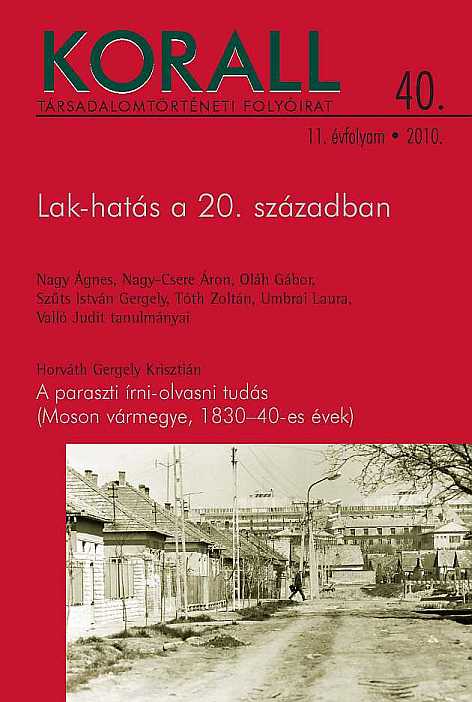Nyomortelepből mintalakótelep. Szocialista városrehabilitáció vagy a szegények fegyelmezése?
From Shanty Town to Model Estate: Socialist Urban Rehabilitation or the Instruction of the Poor?
Author(s): Áron Nagy-CsereSubject(s): History
Published by: KORALL Társadalomtörténeti Egyesület
Summary/Abstract: The author of this study suggests that the mainstream texts of social sciences, defining themselves as value neutral and apolitical, often represent the rather problematic concept of urban rehabilitation as unambiguous. This practice has contributed to the widespread uncritical use of the term. The author aims to revise the concept of urban rehabilitation and suggests that the dominant norms regarding this term in discourses are not self-explanatory, but rather reflect complex power relations. The study reveals those covert power struggles in urban rehabilitation that manifest themselves in external, and often forcible, interference with the living conditions of groups that have little or no ability to protect their own interest. Following the short review of the ‘discovery’ of shanty towns, and the nineteenth- and twentieth-century ideas and scientific approaches to these, the study presents the differences and similarities between the attitudes towards them in the Horthy period and during the socialist regime in the 1950s and 1960s. In the second half of the study, the author zooms in on texts about demolition of the emergency housing of the Mária Valéria estate in Budapest. The study provides a detailed discussion of the disciplinary instruction, that is the stigmatisation and criminalisation, of the poor, as well as the socialist technique of dividing them into ‘deserving’ and ‘undeserving’, which, in the author’s view, has roots in pre-Socialist traditions.
Journal: Korall - Társadalomtörténeti folyóirat
- Issue Year: 2010
- Issue No: 40
- Page Range: 45-67
- Page Count: 23
- Language: Hungarian

